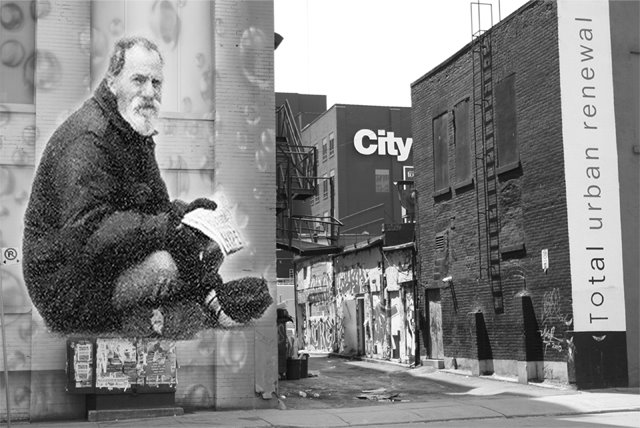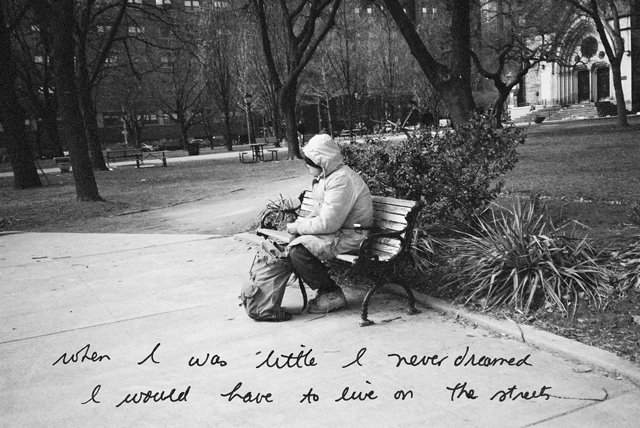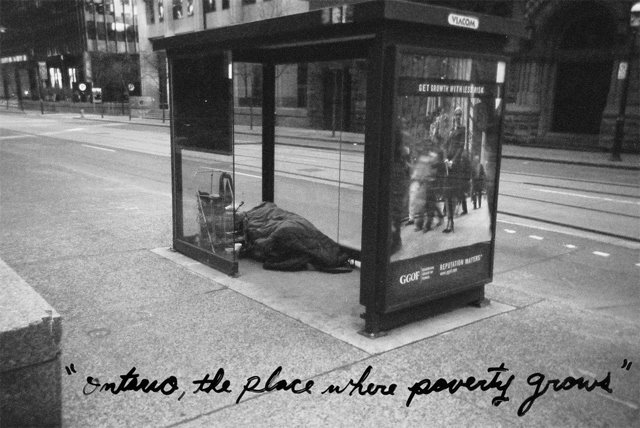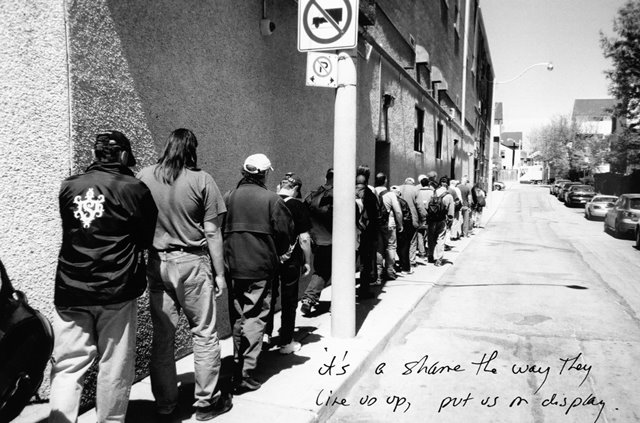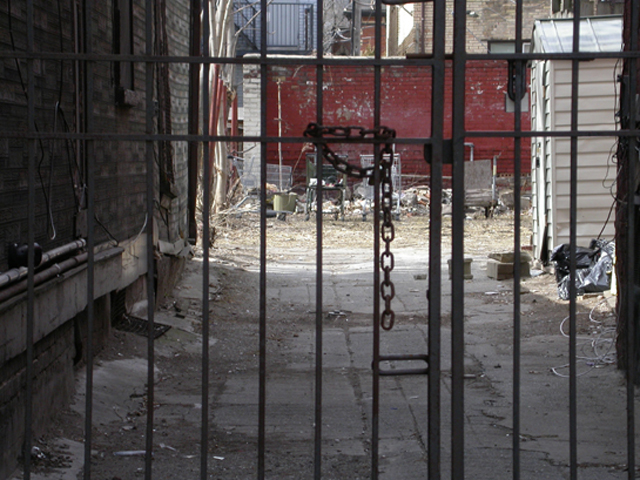
The article Joe Fiorito wrote appeared in the Toronto Star (Wednesday, May 23, 2007). Everyone loved it! It just feels so good to have public recognition of the work. And Joe captured us – the ordinary stories that are told in conversation as we walk and sit around the table. The stories that are absent at other tables and walks.
On our walkabout we visited a place that used to be called the brown door. A notorious spot where you could place money and a mysterious package of drugs would appear. But that has been long gone now. The people have moved on. Dealers don’t stay too long in one place. What can I say – we know that drugs can bring misery to lives as well as relief. They make sleep possible, small escapes into necessary illusions.
I spent time this week writing letters to several of the shelters to see if we can visit. We have talked about going inside and taking pictures. Documenting the conditions, reflecting on the memories, trying to piece together the stories that walk the corridors, that are elicited when you touch the door handles – the stories that are part of every door handle and hinge. I also visited Maxwell Meighen and the Gateway to see if I could find Jamie or Daniel hanging around. No luck there. I was just wanting to catch up. See if Daniel got a job.
Today I took a walk on my own and met two women who sleep in one of the parks in the City. We shared the sidewalk for half an hour and then I moved on as they were working. I paid them for their time with me, albeit it never feels like enough. They would like a politician to stay with them overnight, to sit in their blankets and watch while they pan, while they squeegee.
As I continued on my way I met another woman. She asked me for some change and I had none so I said no, and she turned away. It was the way she turned that touched me, the slowness of her body. It was as if the asking exhausted her, and the rejection was expected, and I could feel her somehow, her soul weariness, so I dug a bit deeper and came up with a piece of paper. I called back to her. Her face lit up and her eyes became red and watery as she said in a broken voice, “It’s so hard right now….” I felt like what I gave her was not enough though she leaned in and kissed my shoulder.
I also went to Scarborough to talk about the work with a group out there. They were a gorgeous group of people and I was paid in rhubarb and lilacs… what a beautiful economy. What a lucky woman am I this week!










